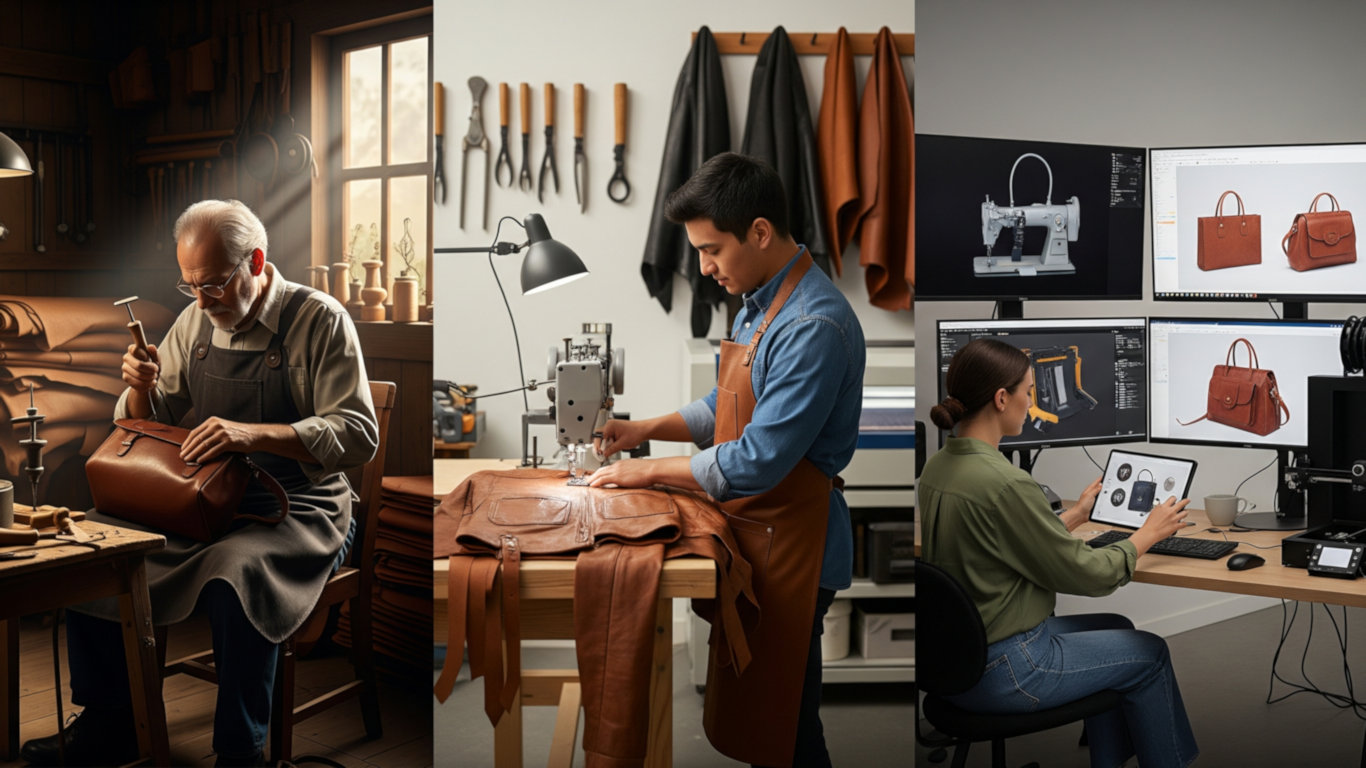Introduction
Leathercraft stands at the crossroads of art, tradition, and industry innovation—a craft that has evolved dramatically over the centuries while honoring time-honoured techniques. In this post, we’ll embark on a journey through time, exploring how leathercraft evolved from ancient practices to its modern incarnations. Whether you’re a die-hard traditionalist or an early adopter of new techniques, this deep dive invites you to reflect on the fusion of history and modernity in leatherworking.
A Journey Through the Ages
From the earliest days of civilisation, leather played a central role in human life. Ancient cultures used leather for clothing, shelter, and tools. Early tanning methods—using natural tannins from oak, chestnut, or hemlock—transformed raw hides into versatile works of art and utility. Over the centuries, leathercraft techniques were passed down from generation to generation, each era adding its own innovations.
During medieval times, leatherworkers were highly respected artisans. They crafted finely tooled saddles, armour, and accessories for the elite. Their work reflected both practicality and artistry, something that still resonates with makers today. For many contemporary artisans, stepping into a leather workshop is like stepping back in time—a tribute to centuries of craft tradition.
Traditional Techniques and Their Enduring Appeal
One of the most captivating aspects of traditional leathercraft is its reliance on hand skills and time-honoured methods. Techniques like saddle stitching, hand-tooled embossing, and vegetable tanning remain popular with modern artisans for their authenticity and unique character.
Consider vegetable tanning: a painstaking process that can take weeks or even months. The gradual transformation of hide into beautifully supple leather is a process that rewards patience and craftsmanship. Modern makers often seek out vegetable-tanned leather because, as it ages, it develops a patina that tells the story of its journey—each mark a testament to time and experience.
Even today, many artisans prefer traditional techniques over modern conveniences. They argue that the tactile satisfaction and sense of achievement that stem from working with your hands is something modern technology can never fully replace. It’s a constant reminder that every piece of work is imbued with history and soul.
The Digital Revolution in Leathercraft
Yet, no craft is immune to the winds of change. Despite its ancient origins, leathercraft has embraced technology in innovative ways. Laser cutting technology, for instance, isn’t just for industrial production—it has become a tool for precision and creativity in the hands of modern makers. With a laser cutter, intricate patterns can be etched into leather with astonishing accuracy, opening up avenues for design that were once simply unattainable.
Digital pattern design and CAD software have also found their places in modern workshops. These tools allow makers to plan projects meticulously on a computer before putting pencil to leather—a marriage of art and technology that honour tradition while pushing the boundaries of what’s possible.
Eco-Friendly Innovations
In today’s world, sustainability is more than a buzzword—it’s a responsibility. Modern leather processing is leaning increasingly towards eco-friendly methods. The shift towards vegetable tanning, improved waste management practices, and the use of renewable energy in production facilities are all part of a broader push towards sustainability in leathercraft.
Artisans are now more conscious than ever about the environmental impact of their work. They are seeking out and even pioneering new sustainable practices that minimise chemical use and energy waste. This modern drive for sustainability not only benefits the planet but also enriches the craft, as makers labour to produce work that is both beautiful and ethically sound.
When Heritage Meets Modern Innovation
The interplay between ancient tradition and modern technology forms the heart of contemporary leathercraft. It’s not an either–or situation; rather, it’s a fascinating mix where each element informs the other. Makers can now achieve the rich, textured look of vegetable-tanned leather while using digital tools to produce intricate designs that push the envelope of creativity.
For example, some artisans now combine digital engraving with hand-tooling. They might start with a laser-etched base design and then embellish the piece with additional hand-carved flourishes. This blend of precision technology and personal touch results in work that is both inherently modern and deeply rooted in history.
Future Trends and Reflections
Looking ahead, leathercraft continues to evolve at a rapid pace. New materials such as synthetic leathers and lab-grown hide alternatives are emerging, offering potential solutions to ethical and environmental concerns associated with traditional leather production. While these innovations may never replace the warmth and authenticity of genuine leather, they add another layer of complexity to the evolving narrative of the craft.
Moreover, social media and online communities have transformed how artisans share their work and collaborate. Platforms like Instagram and dedicated maker forums allow innovators from across the globe to swap ideas, techniques, and feedback. This increased connectivity fosters an environment where traditional knowledge and new techniques can coexist and inspire one another—a truly global marketplace of ideas.
Conclusion
The evolution of leathercraft is a story of transformation and resilience—a testament to a craft that honors its roots even as it embraces the future. For makers in the UK and around the world, this is an exciting time: a moment where ancient traditions support cutting-edge innovation, ensuring that leathercraft remains as dynamic and creative as ever.
As you embark on your own leatherworking journey, take a moment to appreciate both the history embedded in your materials and the modern techniques that let you transform them into something uniquely yours. Whether you’re a devoted traditionalist or an enthusiastic modernist, the craft of leatherwork offers a rich tapestry of methods, ideas, and inspiration for every maker.
